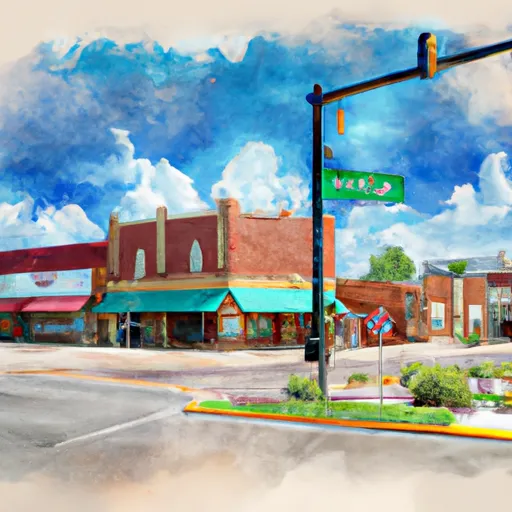-
 Snoflo Premium
Snoflo Premium
Get unlimited access to all our content
With no Ad interruptions! - Start Your Free Trial Login with existing account
Maize
Eden Index
Climate
8.3
•
Recreation
4.5
•
Community
3.8
•
Safeguard
5.8/10

Maize, Kansas is a small town located in Sedgwick County, in the central part of the state. The climate in Maize is classified as a humid subtropical climate, characterized by hot summers and cold winters. Summers are typically hot and humid, with temperatures often exceeding 90°F (32°C), while winters are cold with temperatures dropping below freezing.
Maize is situated near the Little Arkansas River, which serves as a primary hydrological feature in the area. The river contributes to the town's hydrology by providing a water source for irrigation and recreational activities.
In terms of outdoor recreation opportunities, Maize offers several options. The nearby Maize South Sports Complex provides facilities for various sports such as baseball, softball, and soccer. The Maize Recreation Commission also offers programs and activities for residents of all ages, including youth sports leagues and fitness classes. Additionally, the town is surrounded by natural areas and parks, allowing for activities like hiking, picnicking, and wildlife observation.
Overall, Maize, Kansas offers a pleasant climate, access to the Little Arkansas River, and a range of outdoor recreation opportunities for residents and visitors alike.
What is the Eden Index?
The Snoflo Eden Index serves as a comprehensive rating system for regions, evaluating their desirability through a holistic assessment of climate health, outdoor recreation opportunities, and natural disaster risk, acknowledging the profound impact of these factors on livability and well-being.
Climate Health Indicator (CHI): 8.3
Maize receives approximately
812mm of rain per year,
with humidity levels near 80%
and air temperatures averaging around
14°C.
Maize has a plant hardyness factor of
6, meaning
plants and agriculture in this region thrive during a short period during spring and early summer. Most
plants will die off during the colder winter months.
By considering the ideal temperature range, reliable water supplies, clean air, and stable seasonal rain or snowpacks, the Climate Health Indicator (CHI) underscores the significance of a healthy climate as the foundation for quality living.
A healthy climate is paramount for ensuring a high quality of life and livability in a region, fostering both physical well-being and environmental harmony. This can be characterized by ideal temperatures, reliable access to water supplies, clean air, and consistent seasonal rain or snowpacks.
Weather Forecast
Streamflow Conditions
Middle Arkansas
Area Rivers
Middle Arkansas
Snowpack Depths
Middle Arkansas
Reservoir Storage Capacity
Middle Arkansas
Groundwater Levels
Recreational Opportunity Index (ROI): 4.5
The Recreational Opportunity Index (ROI) recognizes the value of outdoor recreational options, such as parks, hiking trails, camping sites, and fishing spots, while acknowledging that climate plays a pivotal role in ensuring the comfort and consistency of these experiences.
Access to outdoor recreational opportunities, encompassing activities such as parks, hiking, camping, and fishing, is crucial for overall well-being, and the climate plays a pivotal role in enabling and enhancing these experiences, ensuring that individuals can engage in nature-based activities comfortably and consistently.
Camping Areas
| Campground | Campsites | Reservations | Toilets | Showers | Elevation |
|---|---|---|---|---|---|
| Wellington Lake East Rec Area | None | 1,225 ft | |||
| Perry Lake | 10 | 1,105 ft | |||
| Lake Afton Park | None | 1,381 ft | |||
| Wellington Lake West Rec Area | None | 1,216 ft |
Catastrophe Safeguard Index (CSI):
The Catastrophe Safeguard Index (CSI) recognizes that natural disaster risk, encompassing floods, fires, hurricanes, and tornadoes, can drastically affect safety and the overall appeal of an area.
The level of natural disaster risk in a region significantly affects safety and the overall livability, with climate change amplifying these risks by potentially increasing the frequency and intensity of events like floods, fires, hurricanes, and tornadoes, thereby posing substantial challenges to community resilience and well-being.
Community Resilience Indicator (CRI): 3.8
The Community Resilience Indicator (CRI) recognizes that education, healthcare, and socioeconomics are crucial to the well-being of a region. The CRI acknowledges the profound impact of these elements on residents' overall quality of life. By evaluating educational resources, healthcare accessibility, and economic inclusivity, the index captures the essential aspects that contribute to a thriving community, fostering resident satisfaction, equity, and social cohesion.

